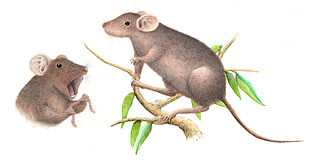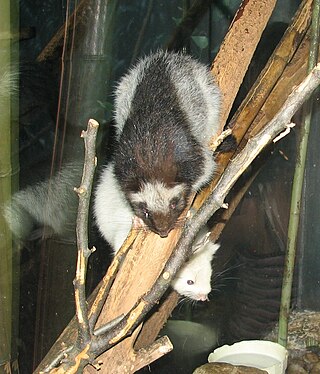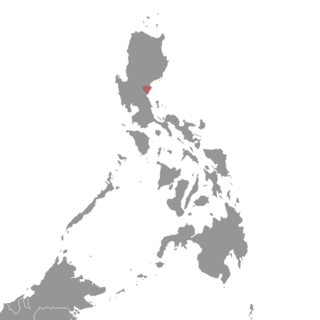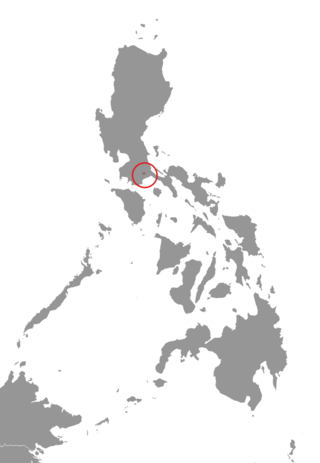
Apomys, commonly known as earthworm mice, is a genus of rodent endemic to the Philippines. Mice belonging to this genus are generally called Philippine forest mice and can be found on most islands of the Philippines except in Palawan, the Sulu Archipelago, and the Batanes and Babuyan group of islands.

Batomys is a genus of rodent endemic to the Philippines. It has six extant described species.

The cloud rats or cloudrunners are a tribe (Phloeomyini) of arboreal and nocturnal herbivorous rodents endemic to the cloud forests of the Philippines. They belong to the family Muridae and include five genera: Batomys, Carpomys, Crateromys, Musseromys, and Phloeomys. They range in size from as large as 50 cm (20 in) to as small as 74 mm (2.9 in). Cloud rats are threatened by habitat loss and illegal hunting. Several species are endangered or critically endangered.

The Camiguin forest mouse is a forest mouse endemic to the island of Camiguin in the southern Philippines. It has large ears and eyes, a long tail and rusty-brown fur, and it feeds mostly on insects and seeds. This description is based on mice captured during a biological survey conducted in 1994 and 1995 high on the steep slopes of one of the island's volcanoes.

The Kalinga shrew mouse is a rodent of the genus Soricomys found in the northern province of Kalinga, island of Luzon, in the northern Philippines.

Banahaw tree mouse is a species of rodent in the family of Muridae. It is named after Mount Banahaw in Luzon, Philippines.
Danilo S. Balete, also known as Danny Balete, was a Filipino zoologist and biologist. His is known for his work on the Philippines' endemic mammal species. He pursued the question of what determines species diversity. The research by Balete and his team overturned previously held notions that diversity decreased in mountainous regions, showing that harsh environments could generate, rather than suppress, species diversity.

The Luzon giant forest mouse is a forest mouse endemic to Luzon, Philippines.

The Luzon Aurora forest mouse is a forest mouse endemic to Aurora in Luzon, Philippines.

The Mount Banahaw forest mouse is a forest mouse endemic to the Mount Banahaw area in the Philippines.

The Mount Tapulao forest mouse is a forest mouse endemic to the Mount Tapulao area in the Philippines. It is named after the American zoologist Barbara Elaine Russell Brown.

The Sierra Madre forest mouse is a forest mouse endemic to the Sierra Madre Range of eastern Luzon, Philippines.

The Luzon Zambales forest mouse is a forest mouse endemic to Zambales in Luzon, Philippines.

The Mount Mingan forest mouse is a forest mouse endemic to Mount Mingan in Luzon, Philippines.

The Mount Irid forest mouse is a forest mouse endemic to Mount Irid in Luzon, Philippines.

The Lubang forest mouse is a forest mouse endemic to Lubang Island in the Philippines.
The Sierra Madre tree-mouse is a species of rodent in the family Muridae. It is found in the forest of the northern Sierra Madre in Luzon, Philippines.
The Mount Pulag tree-mouse is a species of rodent in the family Muridae. It is found on Mount Pulag in Luzon, Philippines.
The Amuyao tree-mouse is a species of rodent in the family Muridae. It is found on Mount Amuyao in Luzon, Philippines.














